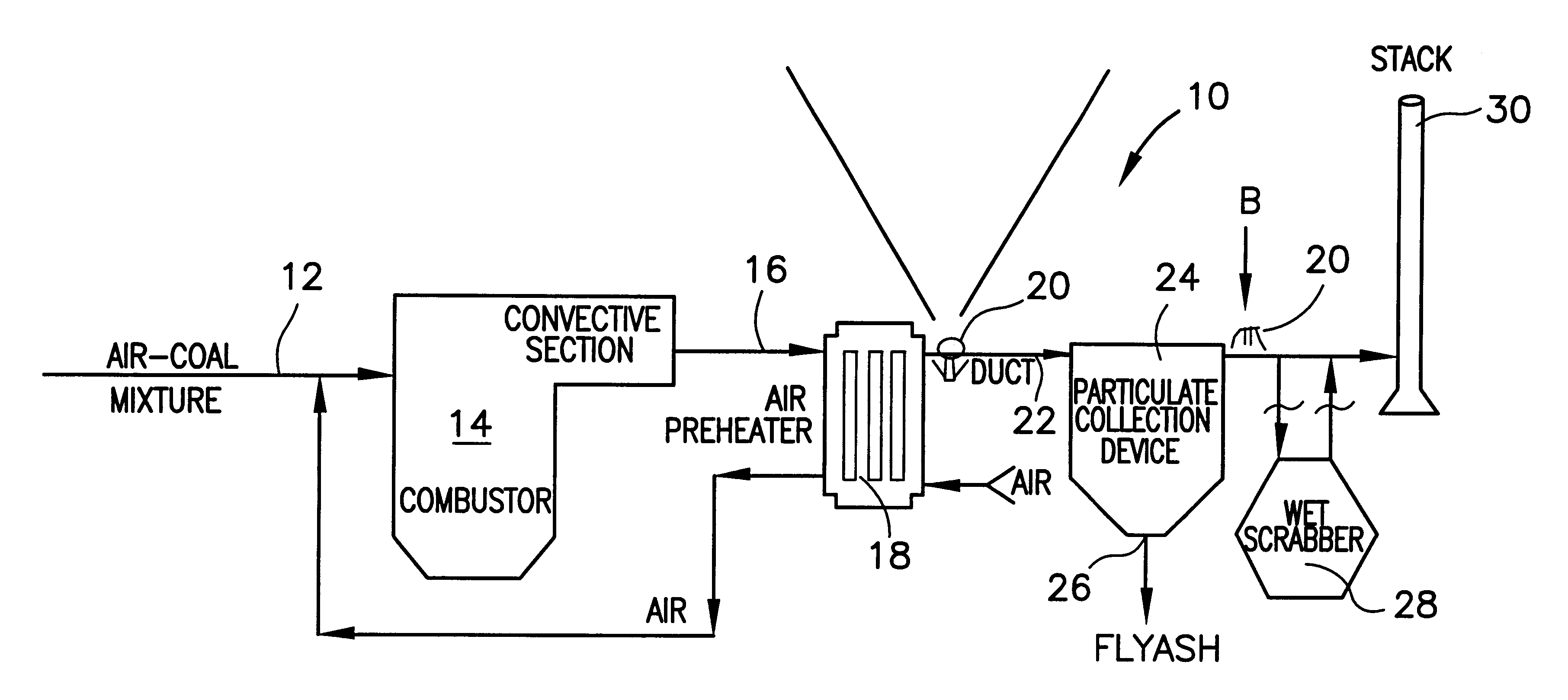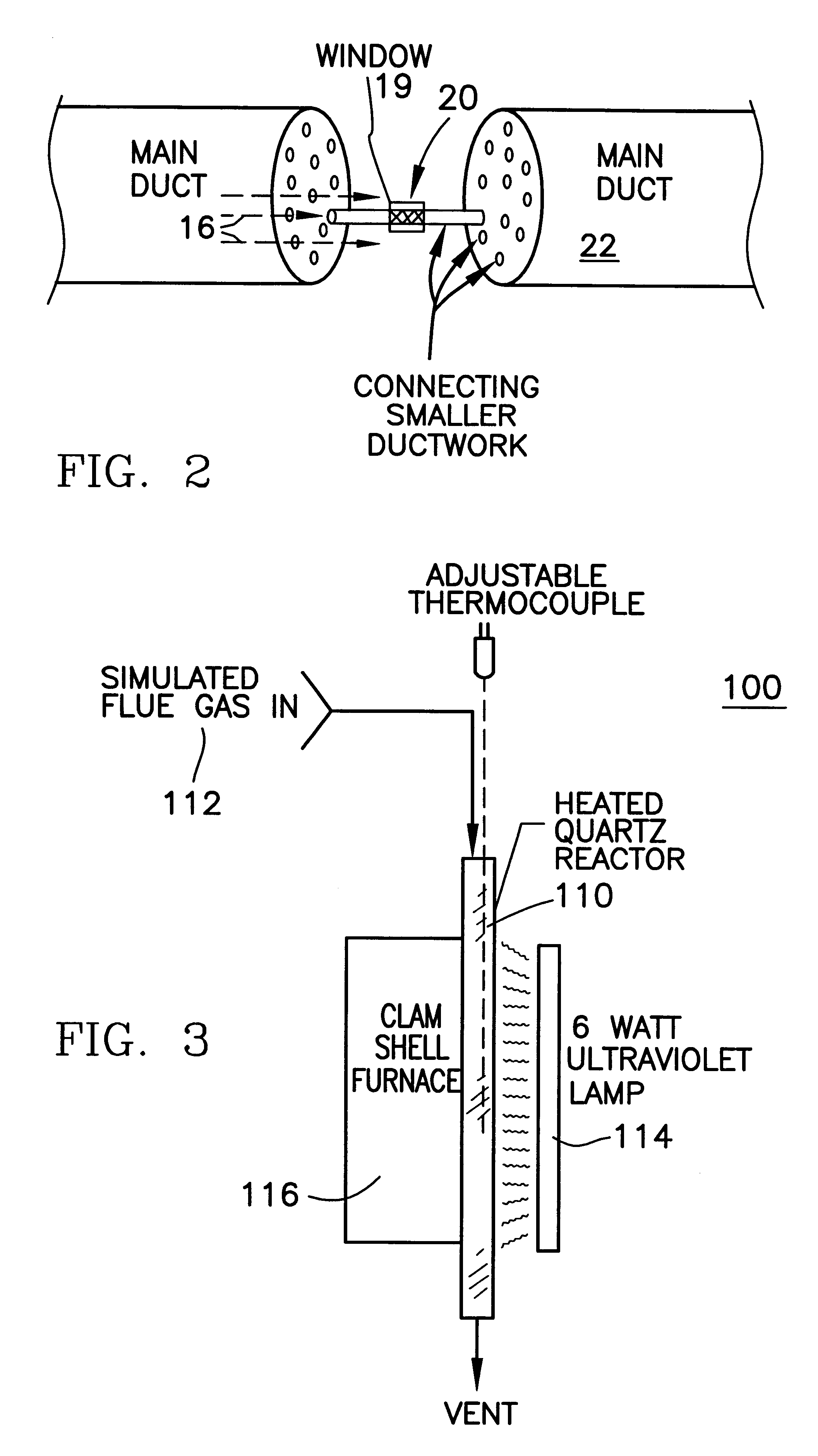Method for removal of mercury from various gas streams
a gas stream and mercury technology, applied in the direction of physical/chemical process catalysts, separation processes, organic chemistry, etc., can solve the problems of reducing the effect of ultraviolet irradiation treatment and simple equipmen
- Summary
- Abstract
- Description
- Claims
- Application Information
AI Technical Summary
Benefits of technology
Problems solved by technology
Method used
Image
Examples
Embodiment Construction
An assembly used for studying the photochemical oxidation of mercury is depicted in FIG. 3 as numeral 100. It should be noted that the device is presented herein in conjunction with the data obtained therefrom, only as an example. Flow rates, irradiation distances, and irradiation times are merely exemplary and should in no way be construed as limiting the scope of the invention. Instead, flow rates, irradiation times, and irradiation intensities are derived empirically and driven by the oxidation efficiencies corresponding to effluent control regulations and targets.
The assembly 100 consisted of an elemental mercury permeation tube (not shown) that was utilized as a source of elemental mercury, a heated quartz photo-reactor 110, a flue gas source 112, and ultraviolet lamps 114. Simulated flue gases flow through the photoreactor 110 which is irradiated with 253.7 nm light. Quartz is used for the photoreactor because it is transparent to 253.7 nm light.
A half-clam shell furnace 116 i...
PUM
| Property | Measurement | Unit |
|---|---|---|
| wavelength | aaaaa | aaaaa |
| temperatures | aaaaa | aaaaa |
| temperatures | aaaaa | aaaaa |
Abstract
Description
Claims
Application Information
 Login to View More
Login to View More - R&D
- Intellectual Property
- Life Sciences
- Materials
- Tech Scout
- Unparalleled Data Quality
- Higher Quality Content
- 60% Fewer Hallucinations
Browse by: Latest US Patents, China's latest patents, Technical Efficacy Thesaurus, Application Domain, Technology Topic, Popular Technical Reports.
© 2025 PatSnap. All rights reserved.Legal|Privacy policy|Modern Slavery Act Transparency Statement|Sitemap|About US| Contact US: help@patsnap.com



